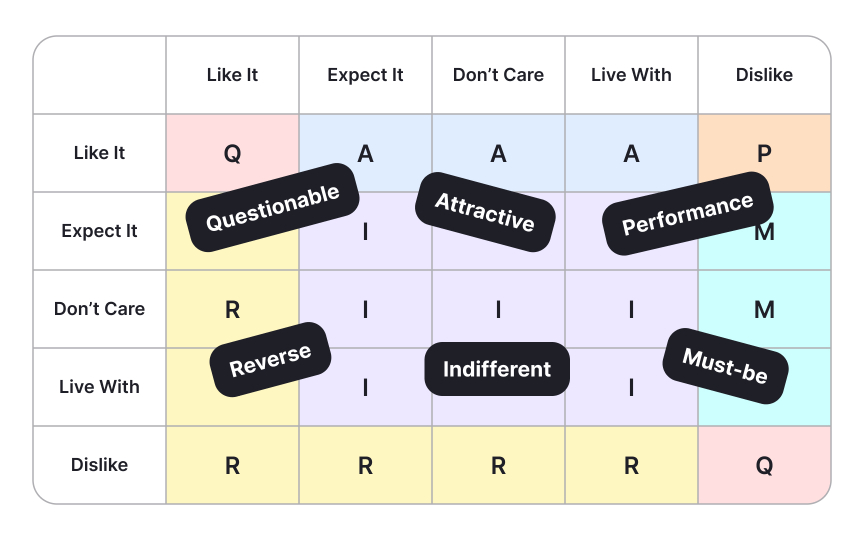Kano Model
The Kano Model classifies product features based on their potential to satisfy or dissatisfy users, identifying 5 distinct categories:
- Must-be features represent basic expectations that cause significant dissatisfaction when absent but don't increase satisfaction when present — like a smartphone's ability to make calls.
- Performance features demonstrate linear satisfaction — better implementation leads to higher satisfaction. For example, faster page load times.
- Attractive features delight users when present but cause no dissatisfaction when absent, making them powerful differentiators. Consider one-click ordering in e-commerce — unexpected but highly appreciated.
- Indifferent features neither satisfy nor dissatisfy users.
- Reverse features actually decrease satisfaction despite being intended as improvements, often due to poor implementation or misaligned user needs.
The classification process involves surveying users with functional ("How do you feel if this feature is present?") and dysfunctional ("How do you feel if this feature is absent?") questions. Responses are mapped on the Kano evaluation table, providing clear categorization. This can help prioritize features that maximize user satisfaction while avoiding investment in unnecessary or potentially detrimental features.

